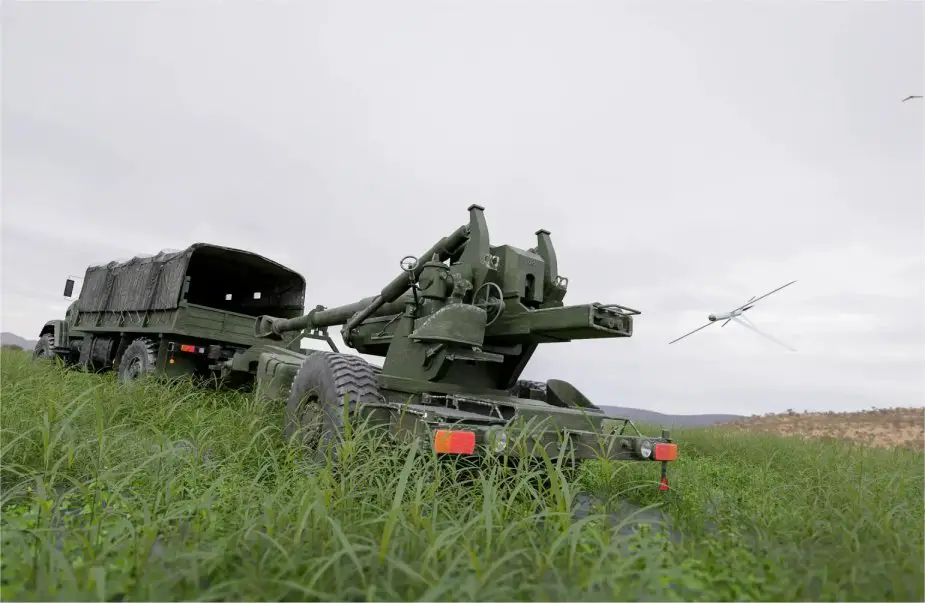- Army
- Conflicts in the world
- Israel - Iran conflict 2025
- Pakistan - India Conflict 2025
- Russia Ukraine War 2022
- Libya conflict day by day
- HAMAS - Israel War 2023
- Operation Serval in Mali French Army
- Sangaris operation Central African Republic
- Sangaris opération militaire République Centreafrique
- Ukraine - Russia conflict
- Syria conflict news
- Defence & Security Industry Technology
- Armies in the world
- Analysis Defense and Security Industry
- Conflicts in the world
- Navy
- Air
Russian drone attack targets key infrastructure in Ukraine
In the latest British Defence Intelligence update on the situation in Ukraine dated March 4, 2024, the British Defence Minister announced that throughout February 2024, Russia conducted a series of targeted attacks against Ukrainian infrastructure, including electrical power infrastructure, using unmanned aerial vehicles (UAVs) equipped for one-way attack (OWA UAVs).
Follow Army Recognition on Google News at this link

ZALA Aero, part of the Kalashnikov Group, has unveiled its latest project: the Izdeliye 55, a new type of loitering munition (Picture source: ZALA AERO)
These offensives primarily targeted the country's energy infrastructure, including power plants and electrical substations. Despite repeated attempts by Ukrainian air defense forces to intercept these OWA UAVs, it is highly likely that the Russian strikes have caused significant damage to Ukrainian energy facilities.
The attacks have spanned across the entire territory of Ukraine, affecting regional energy infrastructure in areas as diverse as Donetsk, Dnipro, and up to Lviv in the far west of the country. It appears that the Russian attacks were carried out using a combination of OWA drones, ground-to-ground missile systems, and conventional rocket artillery, rather than long-range Russian aviation, the preferred method in 2022 and 2023.
Russia's objective, by targeting regional energy facilities, seems to be to degrade industrial activities in Ukraine. Despite the scale of these attacks, the Ukrainian electrical grid has managed to maintain stable network operations. This observation underscores the resilience of Ukrainian infrastructure against a prolonged campaign of disruptions.
Defending electrical infrastructure in Ukraine has become of paramount importance in the current conflict with Russia. These infrastructures are the backbone of the country's daily operations, powering homes, industries, and essential services such as hospitals and communication systems. A successful attack on these systems could not only plunge vast regions into darkness but also cripple the economy, compromise national security, and exacerbate the humanitarian situation.
In response to the growing threat of drone attacks and cyber operations targeting these critical facilities since the beginning of the conflict, Ukraine has intensified its efforts to bolster resilience. This includes enhancing physical and cyber defenses, as well as developing redundancy strategies to ensure the continuity of electricity supply in case of an attack. Given the increase in these attacks in recent months, Ukrainian President Volodymyr Zelensky has called for Western assistance in obtaining more air defense systems.
Over the past few years, the emergence of unmanned aerial vehicles (UAVs) has significantly altered the dynamics of modern warfare. This technological evolution has been starkly demonstrated in the ongoing conflict in Ukraine, where the utilization of drones has not only become common but also sparked discussions on their potential to replace traditional artillery systems.
News Russia Ukraine War


























